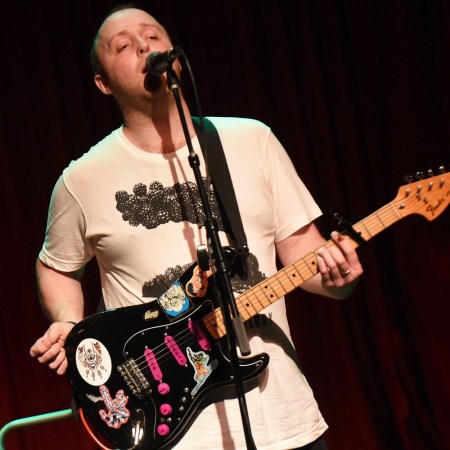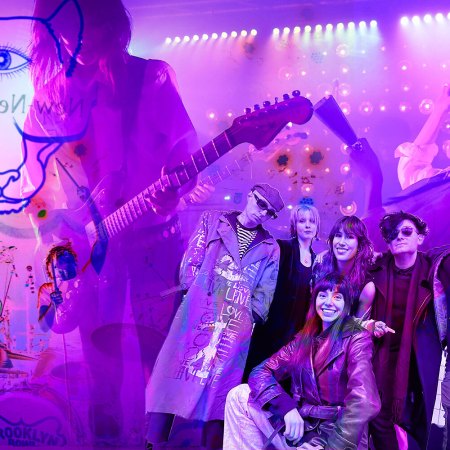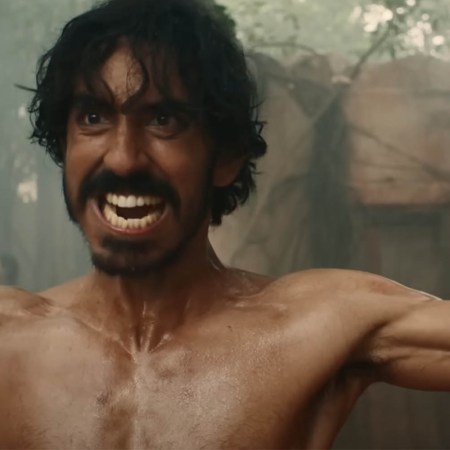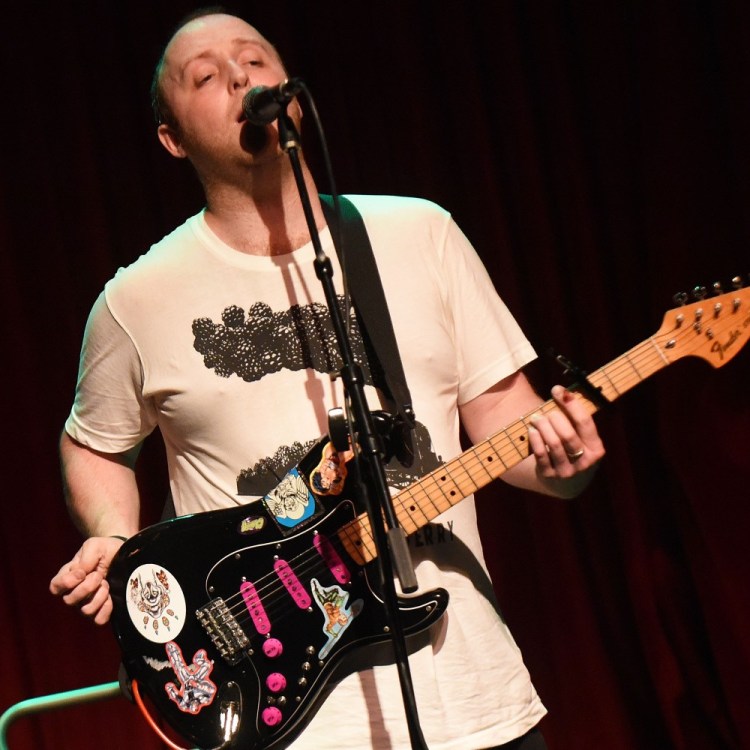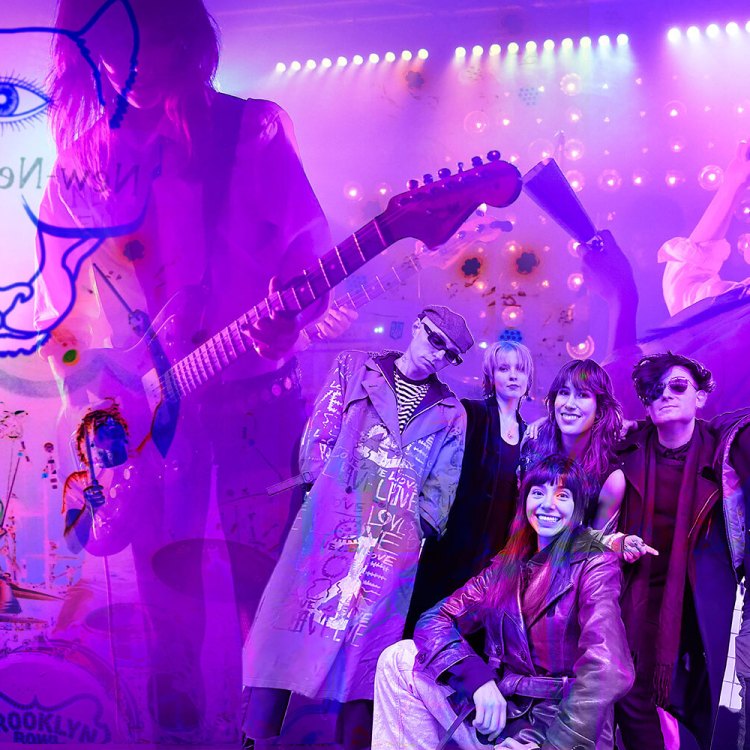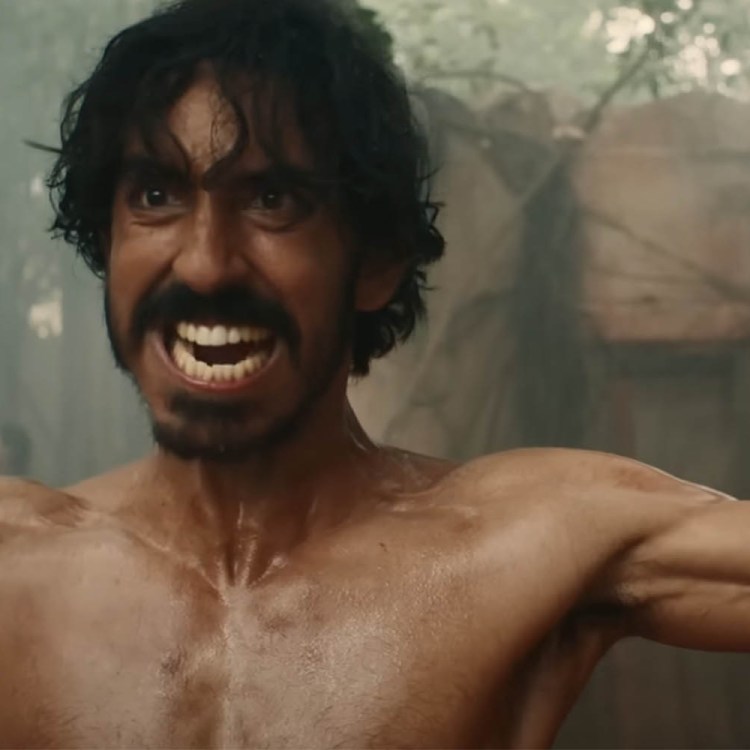An improbably wide-eyed woman, looking not unlike a Keane painting but bearing the earnest, set-jaw countenance of Rachel during a particularly serious moment on Friends, bends over a factory drill press and hears some bad news from the boss. Next, we see her lost in a dark reverie at a kitchen table, her family’s meager belongings packed in a box in front of her. Her equally giant-eyed curly-haired young son (did I mention this was animated?) attempts to cheer her up by gifting her with his much-loved toy bunny.
The soundtrack is a spare and elegiac piano/viola/vocal version of the Cranberries grinding alt-rocker, “Dreams.” It’s as elegant as one of Massanet’s “Meditations,” and it may be the most beautiful music you will hear all day. In fact, it’s so beautiful that it inspires the wide-eyed woman to enroll in Phoenix University and turn her life around.
It’s a helluva commercial and a good representation of the new face of cover songs.
If you came of age during rock’n’roll’s virile adolescence or it’s more complicated middle age, cover songs were a big part of your life. Perhaps you think of covers as a cheap but effective way for a new band to make a mark: Consider Van Halen debuting with “You Really Got Me,” Bananarama doing “Venus,” or even Quiet Riot shrieking “Cum On Feel the Noize.” Other artists created inventive, career-defining works of emotive resonance with covers, like Joe Cocker (“With A Little Help of My Friends”), Jimi Hendrix (“All Along the Watchtower”), the Byrds (“Mr. Tambourine Man”), and Patti Smith, who used Van Morrison’s “Gloria” as a platform for a remarkable poetic and artistic exploration.
“In some ways,” says author, musician, and longtime Patti Smith collaborator Lenny Kaye, “doing a cover version is a lot like the oral transmission in folk music: you learn a song and it becomes part of you, and sometimes you begin to change it and look in the mirror and see how it fits you and see how you can move it into a new generation.”
In the past decade, the nearly ancient and venerable art of recording cover songs has seen a remarkable transformation. No longer merely the province of radio-hungry rock Gollums searching for precious gold, covers are everywhere: in television commercials, in film trailers, in the background (and foreground) on TV shows, sputtered by unknowns on YouTube.
David Hirshland, Executive Vice President at music publishing giant BMG, has noted this trend. “It’s a migration. A lot of artists are still covering songs, they’re just doing them for different outlets, particularly films and trailers; off the top of my head, I can tell you three of our songs have had high-level covers and have been used in fairly high profile trailers or ads. Halsey covered ‘I Walk The Line’, which we have licensed several times, Lorde covered ‘Everybody Wants to Rule The World,’ this band Jetta covered the Alvin Lee song “I’d Love To Change the World.’ The artists aren’t necessarily putting them on their records, they’re just in films or commercials or trailers, and they are doing well for the songwriters and enhancing the artists’ profile.”
A great many of these covers are like “Dreams” in the Phoenix commercial: familiar text and melodies stitched together in unconventional ways. When we come across one of these reimagined songs, we are first alerted (“I know those words…haven’t I heard that tune before?”), then rewarded (“I’VE GOT IT! That’s a weird version of ‘Mad World’ by Tears for Fears!”), and then we focus on the product. Mission accomplished.“I do think about the surprise,” notes John Nau, the pianist and arranger behind the exquisite interpretation of “Dreams.” Nau is also the co-founder of Beacon Street Studios, one of the go-to sources in this new world of covers. “I think people are really pulled in when they recognize something familiar presented in a new way that might change the meaning of what they always thought the song was about. When you score the music to the picture, you try to find the most poignant part of the lyrics that will tell the story, and you don’t want to overpower that lyrical message. In the case of ‘Dreams,’ we did it with a piano, an acoustic bass, and a singer, and we recorded it live in the room, in order to capture a feeling.”
This technique – making familiar pop and alternative rock moody and exotic – can be found in the faux-Lynchian covers in American Horror Story, the tinny, greasy, player-piano roll renditions of Radiohead and Soundgarden on Westworld, every third commercial you see on television or YouTube, and in a lot of movie trailers. Hollywood has become so enamored with this trend that recording them has almost become an industry to itself, as artists like The Scala and Kolacny Brothers and The Vitamin String Quartet have shown. Now that you know that this is “a thing,” you’ll notice it all the time.
“You have familiarity and edginess — a win-win for Hollywood!” notes Martin Atkins, an author and drummer (Public Image Limited, Ministry, Nine Inch Nails, and Pigface) who is also the Music Business Department Chair at SAE Chicago and Music Industries Coordinator at Millikin University. “I think anytime great big bags of money get involved and things become super critical, the solid ground of familiarity can be the go-to.”
There’s another fascinating angle to the cover song boom: Artists covering themselves. You don’t hear that much about this because most aren’t very eager to publicize it.
David Hirshland (Executive Vice President BMG Music Publishing): “We often encourage our writers to re-record their hits. The advantage for us is that you’re not forcing a studio or a music supervisor to go negotiate with a label – you can give them a break on the price.”
This is becoming very common: listen closely next time you hear Devo, Electric Light Orchestra, or Modern English’s “Melt With You” in a commercial and you’ll note that these are not the versions of the song you grew up with, but very close replicas (usually) featuring many of the original players.
Mark Bryan, a guitarist and songwriter in Hootie & the Blowfish who also teaches an Introduction to the Music Business class at the College of Charleston, underlined the incentive for an artist to go back into the studio to make carbon copies of their own hits. “When you sign a record contract, the label usually owns the master recordings that you make for them in perpetuity. However, if you can re-record those songs somewhere down the road after the re-recording clause in your contract expires (usually five or seven years after the initial recording), then you can own the new masters and do whatever you want with them, and make 100% of the money from them. Otherwise, it would likely be a 50/50 split with the label. So it’s advantageous to an artist to re-record their hit songs, after the re-record term of their contract is up. You can choose to release them – I know Toad the Wet Sprocket did that, they re-recorded all of their hits and re-released it as their state-of-the-art greatest hits record – or you can choose to just use them for licensing and sync purposes only, especially if you’ve taken the effort to make them sound just like the originals.”
Cover songs are as much a part of our landscape as ever. They inject their comforting, alerting, and sometimes confusing presence into virtually every aspect of our plugged-in lives.
Lenny Kaye (Co-founder and guitarist, Patti Smith Group): “I like the sense that songs become part of our common language. You hear a song and it can either refer to the time in which it was originally popular, or it becomes a new thing which reflects the ongoing culture. I like the lifeline of a song and I like to see it continue to evolve in ways that make it relevant to the present. It’s a way for songs to transmit, to continue to move through audiences. This is something that’s been going on for centuries.”
This article was featured in the InsideHook newsletter. Sign up now.


